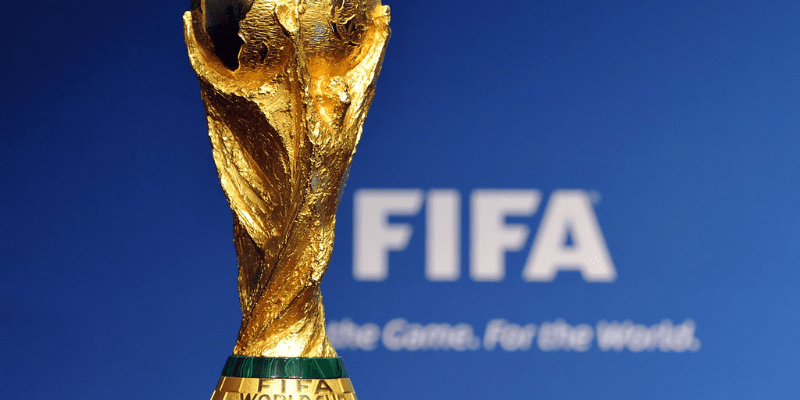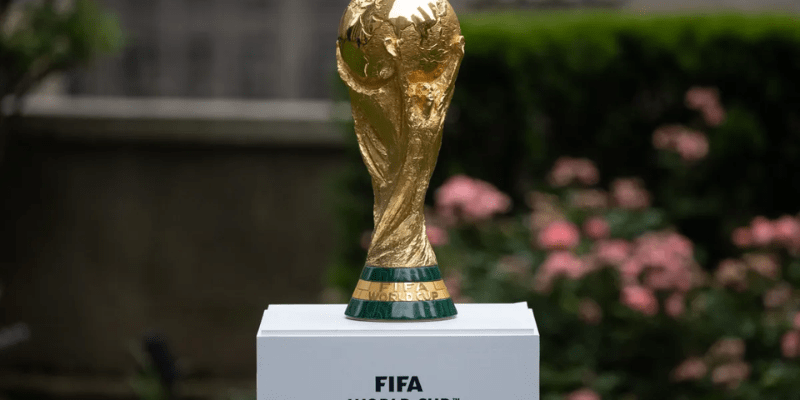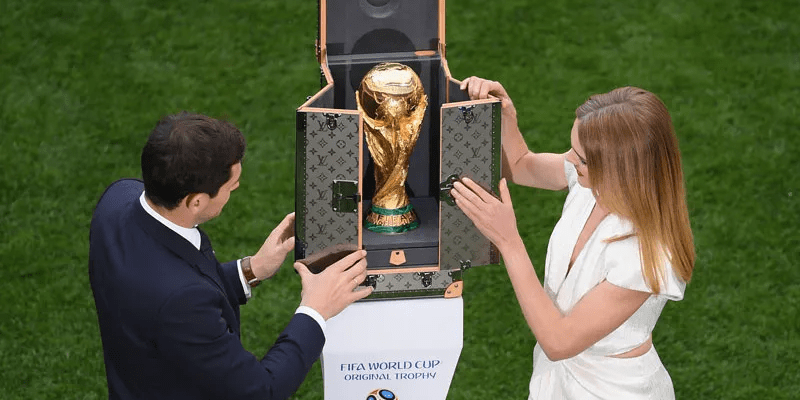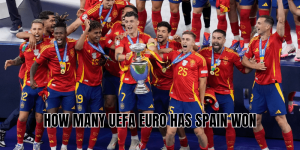Right away: yes, World Cup winners do get a replica trophy — not the original FIFA World Cup Trophy. The original solid-gold (18 karat) cup stays with FIFA, while the winning nation receives a gold-plated bronze replica to keep. AtiGoal will explore how this system works, why it was set up this way, its history, and what winning teams and players actually take home.
What exactly is awarded to winners

- After the final match, the original trophy is used for the trophy-lift ceremony. But once celebrations are over, FIFA retrieves the original trophy; winners do not keep it permanently.
- What the winning country does get is a replica: made of bronze and plated with gold.
- In addition, every player, manager, and key staff member gets a winner’s medal.
Why this replica system exists

There are good reasons behind this tradition. AtiGoal breaks them down:
- Security and value
- The World Cup Trophy is highly valuable, heavy, and symbolic — made with 18-carat gold and malachite base. The risk of theft or damage is real, especially with all the publicity. Keeping the original under FIFA’s care helps protect it.
Tradition & fairness
Every winner deserves something permanent to display in their museums or trophy rooms. Replicas allow that — without giving away the one piece of shared history and prestige. The original trophy becomes part of the legacy carried over. Precedent from the past
- Before 1974, the original trophy (the Jules Rimet Trophy) was awarded permanently if a country had won three times (which Brazil achieved in 1970). After that, FIFA introduced the current system with the new trophy.
The history: Jules Rimet and the current trophy
To understand why things are the way they are, we need to look at the history:
- Jules Rimet Trophy (1930-1970): This was the original trophy. The rule was: if a nation won three World Cups, they would keep the trophy permanently. Brazil did so in 1970, and therefore the original trophy became theirs.
- After 1970: With the original trophy gone, FIFA introduced a new one — the current FIFA World Cup Trophy — for the 1974 tournament. This has remained in use ever since.
What the winners really keep and display

Here’s what the players, fans, and national association get after a World Cup win:
- A bronze replica of the World Cup Trophy, plated with gold. This replica is theirs to keep forever.
- A fancy celebration, including the trophy lift with the real trophy, media, ceremonies — the whole works.
- Individual medals for winners (gold), runners-up (silver), and third place (bronze). Everyone in the squad and key staff receive them.
What about the original trophy itself
- The original FIFA World Cup Trophy remains in the custody of FIFA. It is usually stored at the FIFA World Football Museum in Zurich.
- It may go on official tours, appear at finals, draws, or special events — but it’s not permanently handed over to any winner under the current rules.
Special case: Permanently keeping trophies
There is at least one notable exception in football history:
- Brazil and the Jules Rimet Trophy: Because Brazil became champions three times (in 1958, 1962, 1970), they were entitled under the old rules to keep the Jules Rimet Trophy forever. That is a rare case.
Why this matters for fans and history
- The replica trophy ensures that the physical symbol of triumph can be displayed back home — in museums, in parades, everywhere.
- The original trophy acts as a shared heritage piece, carrying on through generations, reminding the world of past winners and the continuity of the competition.
- It balances prestige with preservation; fans still see the original when they go to certain events.
Conclusion
Do world cup winners get a replica trophy? Yes — that is exactly what they receive permanently. They lift the real trophy in celebration, but afterward, a gold-plated bronze replica is theirs to keep. AtiGoal hopes this clears up what’s real and what’s symbolic in World Cup glory.
If you’re curious about specific replicas, their design changes over time, or how replicas compare value-wise or appearance-wise to the original, just let me know — I can dive deeper into that too!







